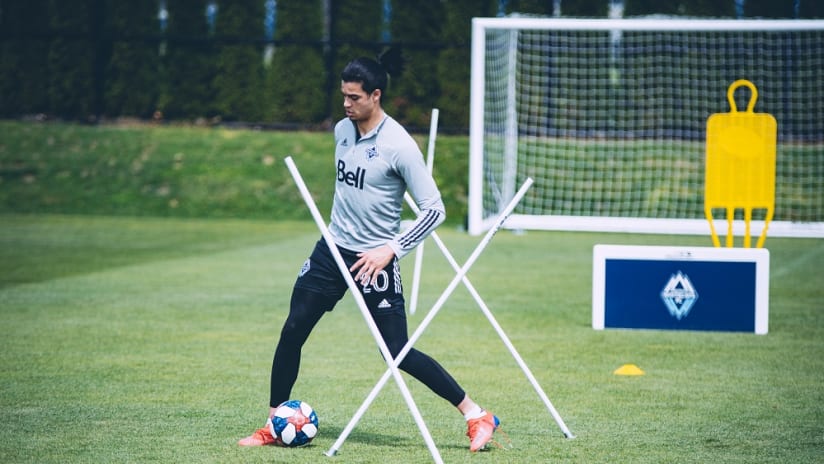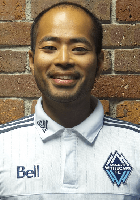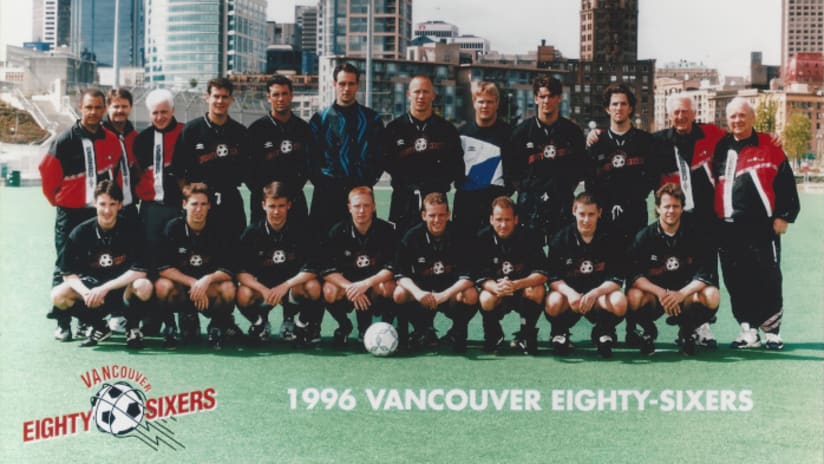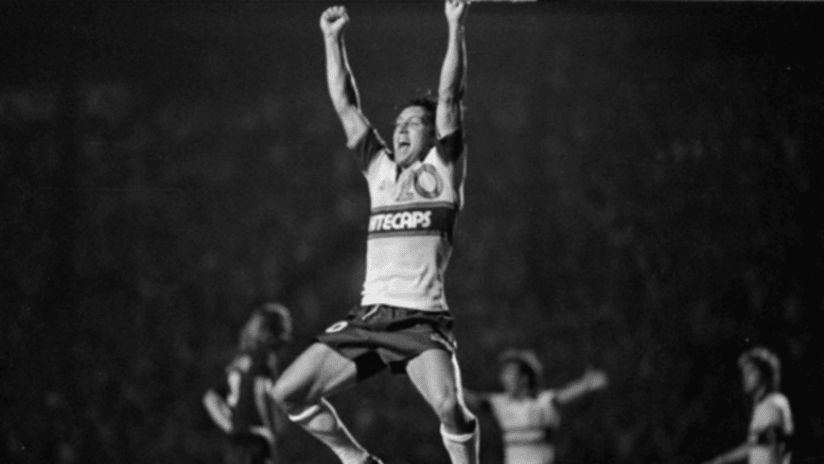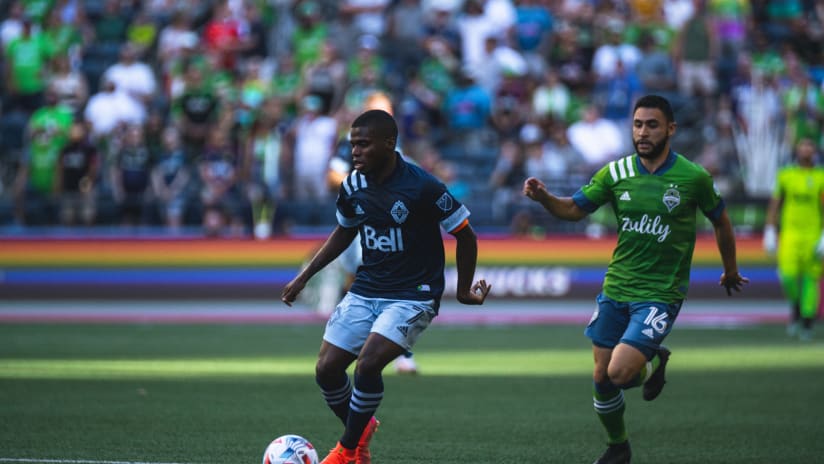“Necessity often breeds innovation.”
This is how Whitecaps FC Performance Strategy, Research, & Innovation team has approached the sudden and prolonged stoppage of play, capitalizing on the break to continue to help and prepare the players for when play resumes.
“We took this opportunity to look at ways in which we can be incredibly innovative and look at how we approach our training,” said Whitecaps FC Performance Strategy, Research, & Innovation Director Dr. Ben Sporer in Members Only Monday the other night, where he took questions from ‘Caps fans and supporters, along with Head of Physical Preparation Jon Poli. “I challenged all the performance staff - whether it be the mental side, the nutrition side, or physical side - to look outside the box and think about things we were forced to do outside of the easy way.”
MENTAL IMAGERY
Sporer discussed the concept of mental imagery as a teaching and skills acquisition tool within a tactical realm, an aspect that has been introduced among the players during the break.
“The player are working with the coaching staff and the team psychologist (Dr. David Cox) to go through image and scripts that actually go over the principles that we want to learn in our sport. That’s probably from a skill acquisition perspective but it is also from a preparation perspective for games to go through that process,” explained Sporer.
“An example could be our back four or all the guys that defend a cross and they are in their position, and they are imagining themselves in position against opposition, the ball gets whipped in and exactly what their role is in that set piece,” added Poli. “It could also be on an attacking set piece.”
Sporer mentioned the research on its effectivity, showing how visualization is as effective in the learning process as the conventional physical drills.
Mental imagery also comes without the physical load that weighs on the athlete after some time.
“You can do it remotely, you can do hundreds of reps until you are just mentally fatigued and also people can practice it on their own,” said Sporer.
RAMPING UP
On the physical side, training sessions have been fluid as the situation and circumstances have changed.
“When we first went off, we didn’t know how long we could potentially be off for, so our mindset at that time was still to drive intensity, do a lot of high-speed running maintenance,” said Poli.
When it was clear that the stoppage was indefinite, the focus shifted to aerobic and key area musculature.
“We changed our approach. We did more work on maintaining the heart nice and strong, maintaining the hamstring obviously, that’s a common injury in football, the groin,” said Poli. “We also integrated yoga into our practice to really work on mobility, stability.”
Another change came in May, when players were allowed to begin individual on-pitch workout sessions at the training facility.
“The transition to field has been easy because they have really good aerobic bases, so now we have been slowing ramping up the intensity of the workouts we are doing. Our first week on field, we started integrating components of intensity and getting their sprint volumes up, their high-speed running up so they can tolerate the demands of the game,” said Poli. “Then we transitioned the last two weeks, just keep building.”
FITNESS CHALLENGE
Early into the break, several players shared that the team was engaged in a fitness challenge – logging their workouts and comparing against their teammates.
The results are evident in the shape they came in upon reporting to the training facility for the first time.
“What we have seen in the last week has been outstanding to show where our guys are at as a club to commitment to stay physically fit,” said Poli.
“The mindset of these players we have is probably the top I have ever worked with. I would be confident (of the majority) playing in a match a few weeks from now with no issues,” raved Poli. “We had athletes (logging) in 120, 130 hours in a month. So do the math on that, it’s pretty insane.”
There was a lot of thought put into the decision to use hours worked as criteria.
“Volume was absolutely critical because we didn’t want a lot of high-intensity work so you can’t attain high intensity for high durations of time. Players ended up going for hikes and walks to get the hours on,” said Sporer. “Walks are actually quite powerful for recovery, it is a critical piece in developing that massive capacity and base that the players can now translate into on-field without a lot of risk and injury.”
The results are in – you’ll have to watch the show to learn which two players placed highest.
But the benefits are now becoming evident as we continue to inch toward seeing the players back in competition.
“They (have come back) really powerful that it allowed it to be successful to where we are today,” said Sporer.

